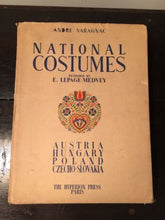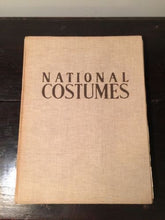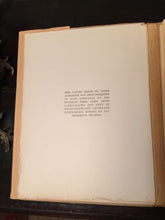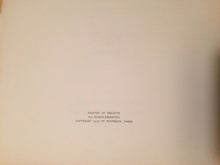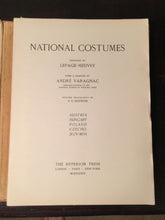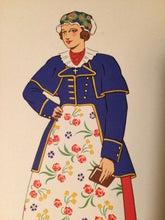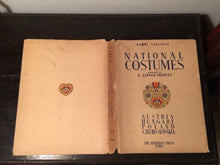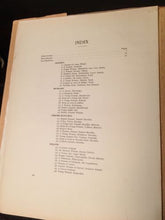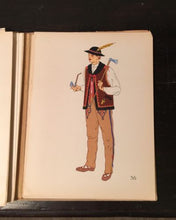NATIONAL COSTUMES - Lepage-Medvey - POCHOIR PRINTS, East Europe - 1st Ed, 1939
Regular price
$49.00
Sale
Year: 1939 (First Edition)
Binding Style: Hardcover with dust jacket
Illustrated: Yes
The Art of the Pochoir Book
The effect is arresting: paging through the leaves of a pochoir-illustrated book, the reader is abruptly stopped by the extraordinary effects of lush, vibrant colors and bold geometric shapes. Bright oils and watercolors seem to come alive on the page in an almost three-dimensional experience. These volumes, with their focus on patterns and color interactions, use a stenciling technique to present decorative arts and the possibilities of book printing. In fact, pochoir is the French word for stenciling, a form of coloring pictures that dates to a thousand years ago in China. It was introduced to commercial publishing in France in the late 1800s, and there it had its most exquisite expression. The pochoir process would use from 20 to 250 different stencils applied to a black-and-white collotype print from a photograph. The collotypes are affixed to stencil sheets of metal or board, and the patches to be colored are cut out. Each color to be applied uses a separate pompon, or brush of coarse, shortly-cropped animal hair, to sponge or dab on the paint. Each stencil is done in turn until the image is finished, so it is essential to place the stencils exactly in position. Though pochoir illustration had its heyday in the 1920s, with Paris as its center of greatest artistic production, several places produced pochoir books during this decade, including London, Florence, New York, and the avant-garde publishers of Prague and other Eastern European cities. In the United States, pochoir gave way quite early to related methods like serigraphy and silk-screening. Occasionally today some fine press books are illustrated using the pochoir method, but its most sumptuous flowering eight decades ago represents a remarkable era in the history of the book.










